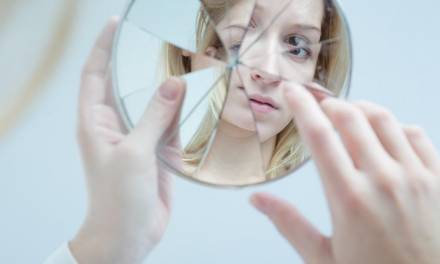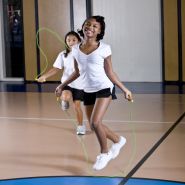In the first of a series of articles on exercise and how to promote a positive body image in students, Rebecca Armstrong looks at the ways in which the two areas influence each other.
The link between exercise and body image is complicated. It is safe to say, though, that participating in a moderate amount of exercise – the government recommends a minimum of 150 minutes of moderate physical activity per week – generally improves body image.
This is especially significant for young people. Exposure to unrealistic and idealised images of celebrities is at its highest ever and eating disorders are on the rise, at a time when children are getting less and less exercise.
Eating disorders
NHS research has shown a worrying rise in the number of under-19s receiving treatment for an eating disorder. In 2013-14, 1,791 young people under the age of 19 were admitted to hospital due to an eating disorder – a huge 172% increase on the 658 admitted in 2003-04.
And this doesn’t even begin to address the numbers who suffer without getting help. Eating disorders are hugely under-reported, especially among men and boys.
More than 90% of these admissions were girls and young women. However, this could change, with the NHS also reporting a 70% rise in male admissions to hospital for eating disorders between 2010 and 2016.
This increase has largely been attributed to men becoming more concerned about their body image, the way they look and the pressures to aspire to an ideal body type.
Self-esteem
Unsurprisingly, body image is intimately linked with self-esteem; if a student doesn’t like the way they look, it is likely to make them feel negatively about themselves. This is especially true of teenagers, whose bodies will be going through a lot of changes.
Research shows that body image and exercise influence each other in a variety of ways. People who feel good about themselves are more likely to exercise, while it has been shown that exercise can be as effective as CBT for improving body image.
Conversely, those who are self-conscious and anxious about their bodies prefer to exercise alone, meaning they lack support and enjoy it less, often leading to them giving up on physical activity.
Body image and exercise
Exercise enhances body image in three ways: it improves fitness, increases awareness of physical capabilities, and raises self-efficacy (that is, belief in your own abilities). Interestingly, these improvements occur even with little or no significant physical changes.
There are many ways in which physical activity can be used to boost students’ body image, but there’s more to it than that. The language used, the reasons for exercising, where and how physical activity take place, and more, all play significant roles.
In forthcoming articles we will look at what can be done in the classroom to help improve students’ body image and the importance of physical activity, why youngsters develop poor body images and the role of the media, the concept of body shaming and how to tackle it, and understanding the pressures that young people are under to conform to certain body types – and what you can do to help.
Rebecca has been a writer and editor for almost 20 years. She writes on a huge range of subjects, concentrating on sport, nature, mental health, and crafts.










